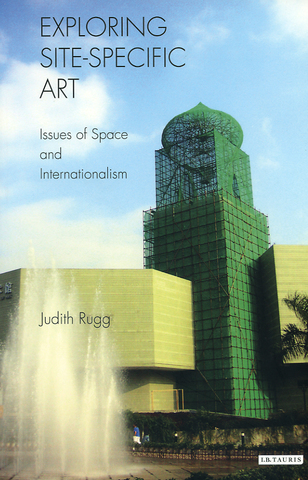Exploring site-specific art: issues of space and internationalism
Rugg, Judith (2010) Exploring site-specific art: issues of space and internationalism. I. B. Tauris, London. ISBN 9781848850644
- Images
- Details
My book focuses on the relationships between site-specific art and space within the context of the international. It considers how interdisciplinary spatial theory can inform the making, theorisation, commissioning, display and reception of contemporary art.
The research probes the significance of the relationships between space and contemporary art with reference to globalising contexts through analysis of a series of artworks, temporarily located in a diversity of spaces outside the context of the gallery. Drawing on urban and social theory, critical geography, feminist, postcolonial and cultural theory, it investigates the psychoanalytic, cultural, political and social dynamics in play within the international spatial contexts of site-specific art.
The book demonstrates how a critical exploration of 'site' in relation to contemporary site-specific art can contest various forms of appropriation of space. It argues that theorisations of art in relation to the spatial must acknowledge wider interdisciplinary debates. Close consideration of the artworks show that they cannot be detached from their spatial contexts – materially, culturally, politically or theoretically. The potential of contemporary art to disrupt the certainties governing the consumption of space manufactured by its regulating discourses reveals the power relations and exclusions within the hegemonic terms of constructed utopias. In the context of the pernicious effects of such regulating structures, forms of contemporary art can dislocate the manufactured stabilities of space. Homelessness, marginalisation, migration, ethnicity, human rights, class, gender and other forms of 'otherness' are part of the ways in which space is produced but denied in the homogenising discourses of modernity. In the fissures of spatial ordering, relationships between art and space can introduce ambivalence where the hidden, suppressed, forgotten and the surrogate are made visible.
The research speaks to curators, commissioning bodies, architects, artists and to interdisciplinary approaches and understandings of the nature of contemporary art and its relationships to space.
Actions (login required)
 |
Edit View |
